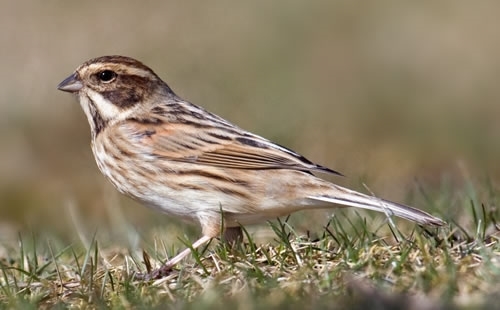(Emberiza schoeniclus)

Habitat: On farmland, reed buntings are associated with ponds, ditches, streams and boggy corners. Also strongly associated with cereal crops and oilseed rape.
Food: Adults feed on or near the ground, taking a range of insects and seeds, including oilseed rape, chickweed and goosefoot. Chicks require insects for the first two to three weeks of life.
Nesting: A cup nest, well-hidden on the ground, in ditch edges or, more occasionally, up to 4 metres high in bushes. Reed buntings may nest in certain crops, notably oilseed rape.
Importance: Numbers have declined by about 50% since 1970. The reed bunting appears on the section 41 Species list and is on the Birds of Conservation Concern ‘amber’ list.
What farmers can do
- Ensure a year-round source of food. Field margins, winter stubbles and wild bird-seed crops provide winter seeds for adults. Field margins, fallow and unimproved grasslands provide rich insect foraging areas for chick food.
- Aim to trim hedges between September and March. If trimming must be done immediately after harvest, avoid trimming the base of the hedge where birds may still be nesting. Similarly, aim to cut ditch sides on rotation, only one side being cut in any one year.
- Establish extended field margins around arable fields. Not only will these provide additional habitat, it will also allow more sympathetic timing of hedge/ditch cutting.
- Field margins could be prioritised in areas adjacent to water (farm ponds, watercourses), as these are favoured by reed buntings.
Get the Latest News & Advice
Join over 100,000 subscribers and stay updated on our latest advice, research, news and offers.
*You may change your mind any time. For more information, see our Privacy Policy.